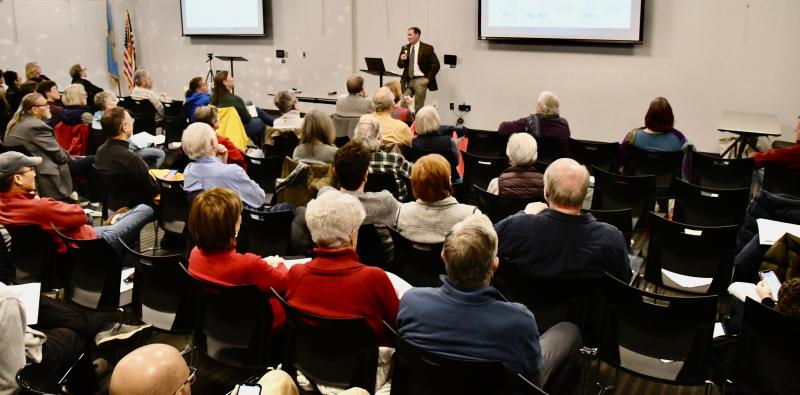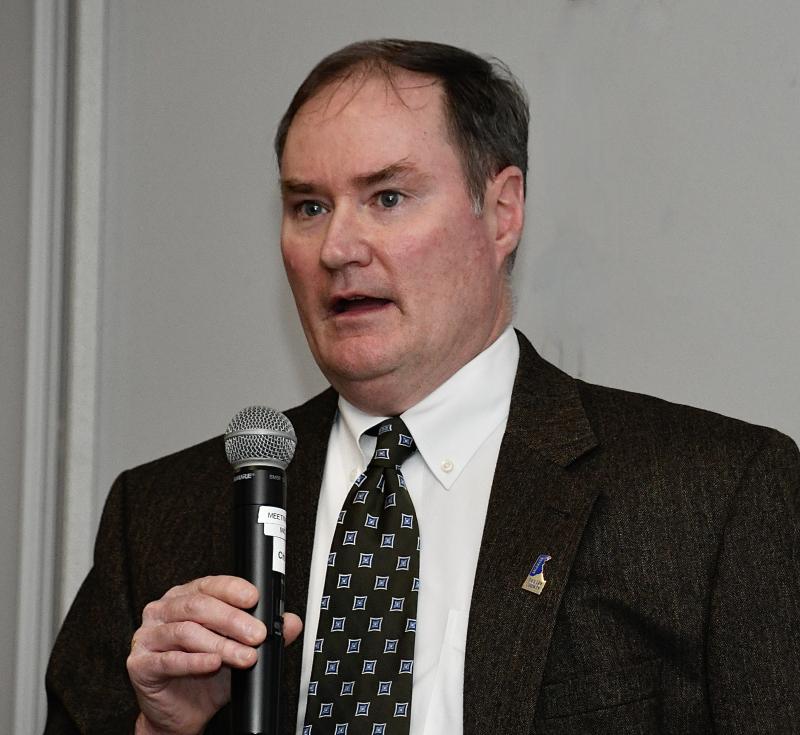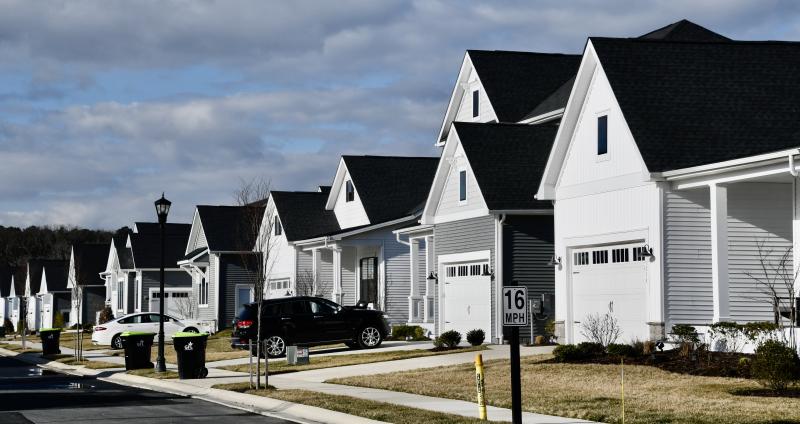State planners: Sussex growth will continue
Using lots of data, Delaware’s Office of State Planning Coordination Director Dave Edgell outlined just how fast housing growth is taking place in Sussex County during a Feb. 13 Sussex Preservation Coalition meeting.
In 2022, 78% of all residential growth in the state was in Sussex. Over the past six years, Sussex has accounted for 60% of all residential units in the state.
During that same timeframe, Sussex has issued 26,602 building permits, which is 60% of all permits in the state.
Edgell said Sussex County is approving more housing development in Level 4 than any other county. Level 4, under the state’s strategy for infrastructure spending, is not a place where state planners say development should occur.
Sussex has issued 19,941 permits in Levels 1-3 and 6,661 in Level 4, which is 25% of all permits issued in the county.
Levels 1 and 2 are areas where growth is anticipated and Level 3 areas are where growth is expected in the future.
Sussex also had the most approved development applications over the past six years at 22,562, which is 62% of all approvals in the state.
“There is no way around it, growth is rapid in Sussex County. It’s a place people want to be more and more,” Edgell said.
Attending the meeting with Edgell was Sussex County circuit rider Dorothy Morris, a principal planner with the Office of State Planning Coordination.
Population predictions
More than 33,000 people have moved to Sussex from other states over the past four years: 8,236 in 2020; 10,575 in 2021; 9,001 in 2022; and 5,120 in 2023.
Edgell said forecasts show that it’s not only seniors who are moving to the county, but also a large number of young families, which will impact school districts’ populations.
“This migration is expected to keep rising for the next three decades,” he said.
The office also coordinates the Delaware Population Consortium. Edgell said population projections must be used as part of all comprehensive plans. The population of Sussex County is expected to increase to more than 361,000 by the year 2050. The county’s population was 237,378 in 2022; compare that to 157,307 in 2000.
Edgell said there is a concern for the lack of affordable multifamily housing units to keep pace with the growing population. “There was more multifamily than we thought, but most are rented at market rates and are not affordable,” he said. “There is a lot being built for the seasonal market, but not as affordable housing.”
About the planning office
Edgell said the office was created in the 1990s. At first, counties were required to submit comprehensive plans, but not the 57 municipalities in the state. He said the plans were reviewed by office staff for certification.
That process has changed. Towns and counties are required to compile updated comprehensive plans every 10 years, with reviews every five years.
Municipal plans are reviewed by the office and sent to the governor for certification. County plans are reviewed by the office and sent to the State Cabinet Committee on State Planning Issues, which makes recommendations to the governor for certification.
Another vital mission of the office is the Preliminary Land Use Service program. All projects with more than 50 housing units or 50,000 square feet of commercial space must submit plans for review by state agencies during scheduled PLUS meetings.
Edgell noted the agencies, such as Delaware Department of Transportation and Department of Natural Resources and Environmental Control, make recommendations to assist developers early in the process.
Edgell pointed out that by law, counties and municipalities rule on all land-use applications. However, the county plan’s future land-use map carries the force of law.
Municipality comp plans carry the force of law, Edgell noted.
Questions from audience
Edgell was asked about amendments to the county’s future land-use map, especially the amendment from low-density to coastal area requested by the developers of the proposed Cool Spring Crossing project on Route 9 west of Lewes. He said the proposed amendment has gone through the PLUS process and could end up going to the Cabinet Committee and to the governor. He said he thinks the Cool Spring Crossing request will probably go that route.
He was also asked how seasonal population is factored into state projections.
He said 25% of all county permits are for seasonal housing units. “It’s a big deal, and that number is factored into traffic projections,” he said. “Those numbers we can’t ignore.”
When asked about state enforcement relating to land use, Edgell said, “Land use has been delegated to local governments and we have no right to intervene. The PLUS process is advisory and we make no decisions. Enforcement is left to the local governments.”
Edgell was asked about DelDOT’s role in the land-use process. It was noted that nearly all roads are owned and maintained by the state. “Why can’t you say to a developer they cannot put those units on your road? Or at least, can’t you restrict development to a certain number of units per year?” asked attendee Jeff Seemans.
Edgell said DelDOT can require developers to make road improvements at their cost. “But we can’t say no if a land-use application is approved by the county. We can do phasing, however,” he answered.
DelDOT representatives will address the coalition at its Tuesday, March 12 meeting from 7 to 8:30 p.m. at Lewes library. For more information about the coalition, go to sussexpreservationcoalition.org.

















































